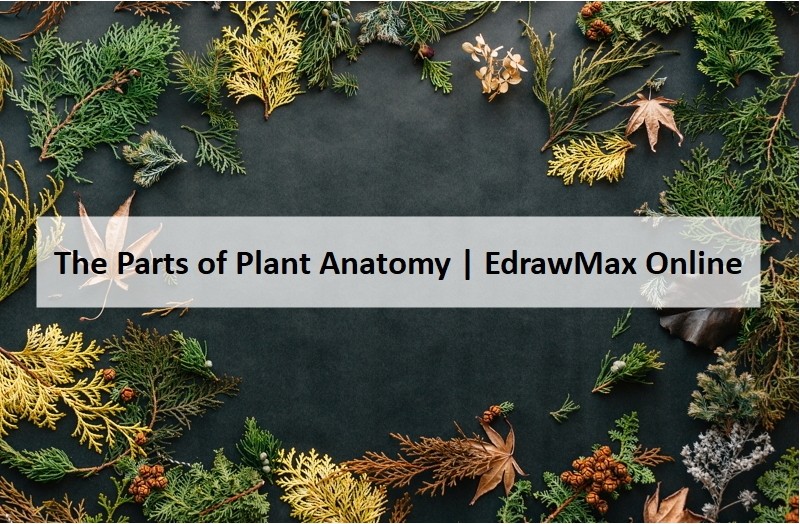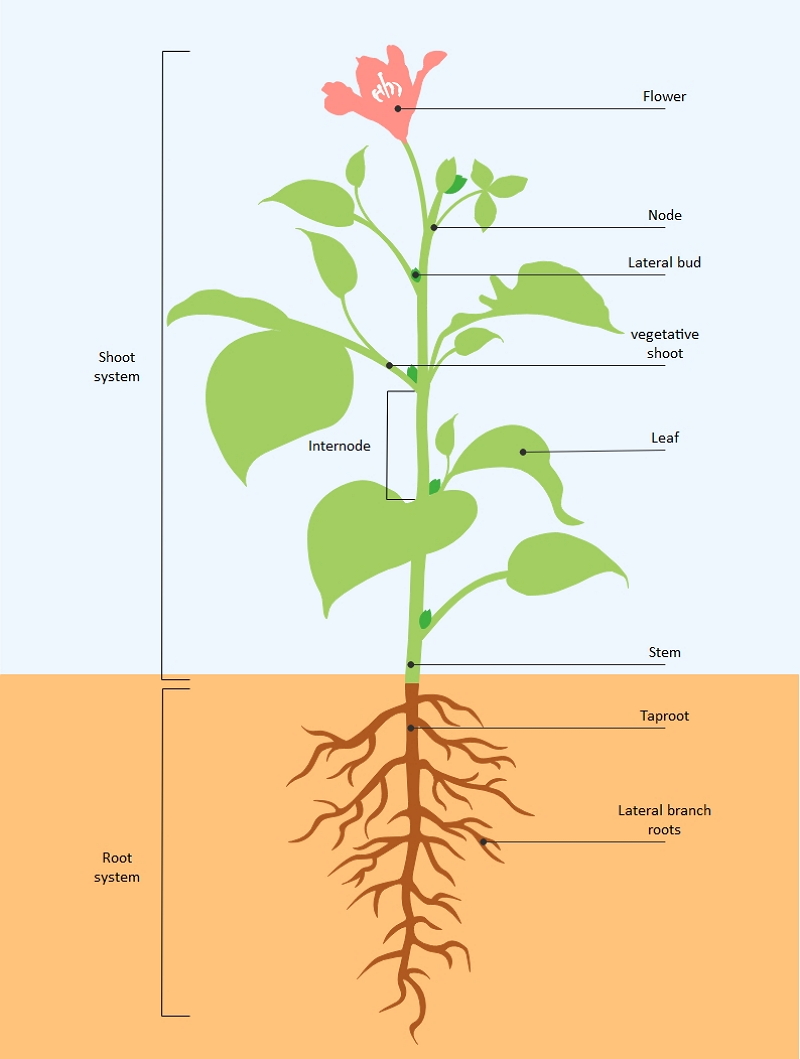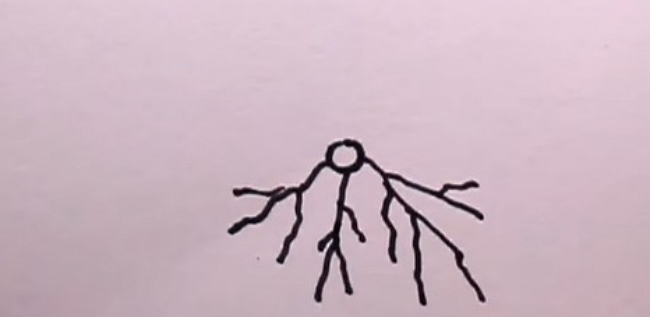A Guide to Understand Parts of A Plant with Diagram
Plants are a very significant part of nature. The entire animal kingdom is very much dependent on plants. It is essential to have a clear idea about the primary parts of a plant. It will help to learn about the plants and their significance. The student must use the EdrawMax Online tool, which can help them to easily create parts of a plant diagram that they can use for their lessons.
1. The Parts of Plant
Plants are an essential part of the ecology, and they are the primary producer of the ecosystem. Plants can be of multiple types, and their reproduction and life span can also vary from species to species.
The plants provide the animals with oxygen and food, and after they die, they mix with the soil and add nutrients. They also take in carbon dioxide for photosynthesis. Hence create a balance of oxygen and carbon dioxide in the atmosphere. The primary parts of the plants are root, stem, leaves, flowers, fruits, and seeds. A plant may or may not bear flowers and fruits.

1.1 The Structure of a Plant
The plant structure primarily consists of a shoot system and root system. It includes stems, leaves, flowers, fruits, and seeds, while the root system consists of only the roots.
- Roots:
- It helps the plant to stay on the ground.
- It takes in the water and nutrients and sometimes stores the nutrients.
- Roots participate in vegetative reproduction.
- Stems:
- They support the plant and leaves and flowers grown on them.
- They help in the transportation of water and nutrients and also store the nutrients in some cases.
- Leaves:
- They are the site of photosynthesis.
- They are the site of photosynthesis.
- Flowers:
- It holds the male and female reproductive parts of a plant.
- It also attracts pollinators for pollination.
- Fruits:
- They have a suitable structure to ensure the dispersal of seeds.
- They protect the seeds and cover them to prevent them from dying.
- Seeds:
- If they get dispersed in new places, the plant species grow there.
- It nourishes the embryo and stays dormant until it finds a favorable condition.
The roots are primarily white and chlorophyll-less parts of the tree. They mostly stay under the ground and help in sucking the water and other nutrients from the soil. The roots can be hair-like, which is called fibrous roots. The short and thick roots are known as taproots.
Functions:
Stems make the central part of the shoot system, and they are separated into nodes and internodes. Flowers and leaves grow into nodes. The space on the stems between the nodes is called internodes. Though most plants have stems above the ground, some plants have underground stems, known as Tuber. For example, potatoes. They store nutrients and are edible.
Functions:
Leaves are the flat part of the plant which has chlorophyll and participates in photosynthesis. Most of the leaves have two main parts, lamina, and petiole. The flat part of the leaf is called the lamina, and the petiole is the part that stays attached to the stem. The leaves may have different shapes and colors. In desert areas, the leaves turn into thorns to prevent water loss. The needle structure of conifers is also leaves that have a waxy coating to decrease the rate of transpiration.
Functions:
Flowers have the reproductive parts of the plants. They have four main segments, sepals, petals, stamen, and pistil. A flower has colorful petals and a good smell to attract pollinators. Pollination occurs, and after fertilization, the flower's ovary turns into the fruit, and the ovules become the seeds.
Functions:
After fertilization, the ovary of the flowers transforms into fruits. They bear seeds, and they are primarily edibles. The animals eat the fruits and help in the dispersal of the fruits.
Functions:
When the fertilization completes, the ovules present in the ovary of the flower grow into seeds. These seeds are primarily in the dormant stage. However, in favorable conditions, develop roots and shoots to form a plant.
Functions:
 Source:EdrawMax Online
Source:EdrawMax Online
1.2 The Classifications of Plants
There are different species of plants, and based on their characteristics can be separated into multiple groups and sub-groups. Students can divide the entire plant kingdom into two sections: vascular and nonvascular.
- Vascular Plant: When a plant takes in water and nutrients with the help of its roots and stems, it is called a vascular plant. If a plant does not use its roots and stems for sucking water and nutrients, they are known as nonvascular plants.
- Nonvascular Plant: The vascular plants can be further classified in seed-bearing trees and spore-bearing trees, while the nonvascular plants have algae under this section.
- Seed-Bearing Plant: The seed-bearing plants are mainly of two types, angiosperms, and gymnosperms. The angiosperms have flowers, and the ovules protect the seeds. An example of angiosperms is apples. If a plant has a “naked seed," not having ovule protection, they are known as gymnosperms. Conifers are an example of gymnosperms.
- Angiosperms: Grasses come under the classification of angiosperms. They reproduce by rhizomes or underground stems that grow horizontally.
- Woody Shrub: When a plant has stems covered in wooden bark, it is called a woody shrub. If a woody shrub has a main trunk and branches emerging from it, it is called a tree.
2. How to Draw the Parts of Plant Diagram
The students need to use parts of a plant diagram to learn about the plants and the function of different parts of the plant. However, it is challenging to create a plant segment diagram by hand. They can follow these steps:
2.1 How to Create Plant Diagram from Sketch
Creating such a diagram by hand can be difficult. The students can follow these steps to make their plant diagram:
Step 1: The students need to draw curved branches or roots on this first step.

Step 2: There is the stem, which looks like a curved double with two branches coming out of it.

Step 3: Students should draw leaves on some branches, flowers on the top of the others, and the apex.

2.2 How to Create Plant Diagram Online
It is time-consuming to create parts of a plant diagram by hand. The students may not get satisfactory results. They can use the user-friendly EdrawMax Online tool to draw a part of a plant diagram. Here are a few simple steps which they can follow:
Step 1: To start, the students need to open the easy-to-use EdrawMax online tool. Then they need to open New. Under this tab, there is the Science and Education option. The students need to click on this.

Step 2: The students can use this tool to draw different education-rated diagrams. For the parts of a plant diagram, they need to go to the Biology option. They can choose the required image and then modify it as per their choice.

Step 3: After selecting the template they require, the students should modify it as per their choice. The tool gives the students some hassle-free options to edit their diagrams. They can work on those images according to their preference to create a high-quality plant image.

Step 4: Once they are satisfied with their diagram, they can save it in multiple file formats and export it for future use.

3. Facts about the Parts of Plant for Kids
There is a lot to know about plants. Here are a few fun facts about plants:
- The plants use roots for taking in water and supports. The roots also suck nutrients for the plants from the soil.
- For vegetative reproduction, some plant species use their roots.
- The plants may or may not bear flowers. A plant may have all male flowers or all female flowers. Some plants have both male and female flowers for easy pollination.
- The pollinators get attracted to the plants because of their flowers. They have pretty petals and a sweet smell to attract birds, insects, bees, and butterflies.
- Seeds can be within the fruit, and birds and animals who eat the fruits can disperse the seeds.
- When seeds don’t grow within fruits, the plants have other mechanisms that help in the easy dispersal of seeds. Other than animals, wind, and gravity, water also acts as the dispersals medium.
- Flowers have male and female parts, and hence they help in pollination and fertilization. Apart from that, many plant species use various other segments for vegetative reproduction.
4. Conclusion
A student can use the parts of a plant diagram to study the primary plant segments and their functions. Creating a part of a plant diagram by hand is time-consuming, and hence the students can use EdrawMax online tool to make a high-quality diagram without much difficulty.
In conclusion, EdrawMax Online is a quick-start diagramming tool, which is easier to make parts of a plant diagram and any 280 types of diagrams. Also, it contains substantial built-in templates that you can use for free, or share your science diagrams with others in our template community.



